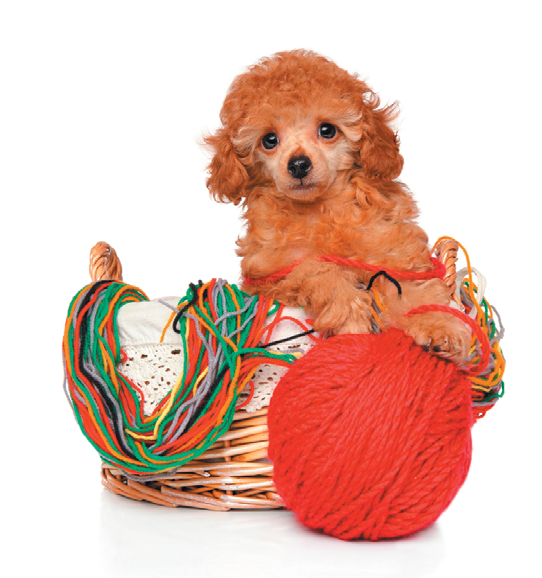Most dogs start going for yearly teeth cleanings around the age of five or six. It’s at that point that enough hardened plaque (calculus) has accumulated to get in the way of good oral hygiene, and brushing can’t remove that. It takes a veterinarian’s professional instruments. A professional cleaning also allows a veterinarian to put a dog under anesthesia to get to accumulated calculus below the gum line, where, if left unchecked, it could lead to damage of the bone that anchors a tooth in place.
But toy breeds, or mixed breeds that are the size of toy dogs, might start to need regular cleanings as early as age three. One reason is that many are fed soft diets and table scraps; they’re not eating foods that, via chewing, mechanically scrape plaque from the teeth.
In addition, toy breeds tend to have big teeth for the size of their jaws. That causes overcrowding and in turn contributes to plaque accumulation of its own. If a toy dog’s dental disease is severe enough, his jaw can actually break while he’s playing. Because of these issues, it’s not unusual for toy breeds to have to go for a dental check-up not only earlier in life but also twice a year instead of once.
A dental check-up should be more than just a cleaning
Whether your dog is toy size or larger, a dental exam shouldn’t be limited to removing calculus. The vet should also look at all the soft tissues of the oral cavity — the cheeks, tonsils, tongue, palate, and so on — to check for tumors, which in some instances can be cancerous.
The doctor should check for missing or broken teeth, too. They’re important to identify because they can abscess, meaning they can form pus-filled cavities, potentially taking an infection from bad to worse.
Often, the best way to deal with badly broken or abscessed teeth is simply to remove them. Dogs tend to do a lot more gulping down of their food than chewing it, so they don’t need all their teeth to eat.
Extracting a badly damaged tooth can sometimes give a dog his life back. One of our veterinary dentists once saw a miniature poodle for a dental checkup, and she was warned ahead of time that the dog snarled at anyone who attempted to stroke him and tried to bite his regular veterinarian every time the doctor came near him. It turned out that four of his teeth were so far gone they needed to come out. Within days of the extractions, the dog went from his Cujo-like state to being calm and pettable. The pain his teeth were causing him had been making his life miserable.






Small dogs are very sensitive to anesthesia. Is this safe to do as often as you are suggesting?
Pre-covid, the veterinarian practice where I was bringing my dog suggested to me to have my 6 yo cairn terrier’s teeth cleaned there for $1,500 (precleaning estimate). When I questioned the high cost I was told that this is their typical charge and that I could reduce the cost by purchasing an insurance plan.
I cancelled the appointment citing covid reasons but the high cost estimate was the actual reason.
I still have 3 weeks before I am completely vaccinated against covid and then I will persue the dog’s teeth cleaning, but I hope to spend much less, but still receive a level of competence. Am I incorrect in feeling that I should be able to spend less for a teeth cleaning?
PS: My dog is healthy, seems to have no teeth problems, does not have bad breath and I was the one to question the vet about whether or not they would recommend cleaning – she did not suggest it to me.
That seems very high to me. I live in the Washington, DC area, which is not a low-cost area and I’ve typically paid about a third of that for uncomplicated cleanings with no tooth extractions or X-rays.
I concur with Sarah, that seems very high for a dental cleaning. I live in Vermont and my veterinarian charges about half of that, including x-rays. My pet insurance doesn’t cover general cleanings but does cover extractions if not associated with pre-enrollment dental disease.